Marine Conservation Society’s aquaculture program manager says consumers don’t understand ec0-labels and don’t need to
Editor’s note: This is part 2 of a two-part interview. To read part 1, please click here.
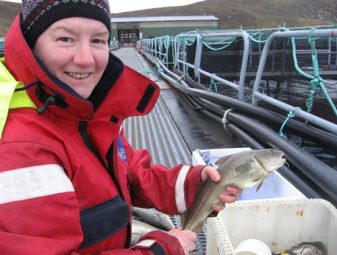 Fishmeal is a crucial component of aquaculture and its growth prospects, even for largely herbivorous species, which need fishmeal in their diets at the hatchery stage. Firstly, to the industry’s credit, it has been reducing its dependence on fishmeal, leaning more on plant-based ingredients. But there have been concerns raised that fish on diets with more substitute ingredients may not offer the same nutritional profile that their wild counterparts do. Is this something for fish farmers to be worried about?
Fishmeal is a crucial component of aquaculture and its growth prospects, even for largely herbivorous species, which need fishmeal in their diets at the hatchery stage. Firstly, to the industry’s credit, it has been reducing its dependence on fishmeal, leaning more on plant-based ingredients. But there have been concerns raised that fish on diets with more substitute ingredients may not offer the same nutritional profile that their wild counterparts do. Is this something for fish farmers to be worried about?
I don’t think fish farmers carry the burden of worry about this exclusively. Credit where it’s due: Producers have reduced their reliance on fish oil and fishmeal significantly over the years, and that is something that MCS acknowledge and applaud. I think fishmeal and fish oil content is very much driven by retailers, particularly in the UK. Producers produce what retailers want, what’s wanted in the marketplace. Producers are concerned about fish health and welfare, good nutrition and product quality. They need to produce a healthy, good-quality fish that they can sell.
How do you mean? Retailers’ specs go so deep as to influence the feed content?
If you have a premium range, say for Atlantic salmon in a U.K. retailer, that premium range is very much marketed and dependent on having a higher EPA/DHA content. To achieve the high EPA/DHA content in the fish product their diet has to include a higher fishmeal and particularly fish oil content. Many retailers will also specify what can and can’t be used as non-marine feed ingredients as alternatives. Look at things like Label Rouge, the French quality standard. It requires a high fishmeal and fish oil content in the diet. They have reduced it, but until just recently it was exceptionally high, and they wouldn’t allow any substitution.
Secondly, there is a lot of food wasted along the supply chain, not just in seafood but in all sectors. Andrew Jackson at IFFO told us last year that fish frames and other byproducts account for about one-third of aqua feed production. How much of a difference is this making?
Andrew is right the latest figure I have is 35 percent of aquaculture feed is now made up of trimmings and byproducts. The latest 2014 FAO report 2014 indicates this will probably increase to 50 percent by 2030 as we get better at utilizing fish waste and finding new markets for their use Globally we can’t afford to have waste at any point in the supply chain; waste needs to become a thing of the past. We need to utilize all processing waste; in addition it is also important to make sure we’re not wasting at the consumer level. I think it’s really important that consumers understand their level of responsibility. If you look at the use of natural resources and the overall environmental impact that we have in food production including the energy required to process and market that food for it to end up discarded by consumers at home or in restaurants due to large portion sizes is criminal. It really is.
Producers produce what retailers want, what’s wanted in the marketplace. Producers are concerned about fish health and welfare, good nutrition and product quality. They need to produce a healthy, good-quality fish that they can sell.
I recently went to a landfill site with a colleague as a field trip. We were there looking at plastic recycling and while there I was chatting with a guy and we went past a huge silo full of food that had come straight from a supermarket. I could have wept. It was bagged food, apples, fruit, pastries and cakes and all this packaging. It was perfectly edible food. I said, “How much does this represent, just this week?” He said, “No, it was all from this morning.” That was one landfill, in one part of Scotland, in one morning. If you look at the resources needed to produce this food, and for it to end up in landfill … we just need to take responsibility for that at every level. We cannot live in a world where that’s acceptable.
What are the implications of wasting so much food, and how can seafood companies help to reverse this trend?
We know we have a burgeoning world population. We know we are producing enough calories in the world for us all to have a healthy diet, yet we have in the developed world an obesity crisis and in the developing world we still have malnourished and starving populations. Globally we are producing enough food; it’s food distribution that’s the issue. We’re still working to find innovative feed solutions to feed the farmed products that we actually want to produce, yet at the same time still sending waste to landfill. We know full well there are solutions to utilize that waste to produce a protein that can be used for feed, for example insect protein, which can grow on any feed substrates such as wasted food, and can then turned into a viable feed protein. So what’s the barrier? Why aren’t we using more insect protein? Is it partially economics, because we’re not producing enough to make it economically viable? In the conversations I’ve had, it’s consumer acceptance, it’s the yuck value. Apparently consumers don’t want to buy farmed fish that’s been fed insect meal.
But every trout in every river eats bugs, right?
You know that and I know that and intelligent consumers around the world understand that. But how would the message about it — farmed fish raised on maggots — get out in a responsible way? Who controls that kind of messaging and how it’s put out to the general public?
Sticking with consumers, do they understand eco-labels? More importantly, do they need to?
Do they understand them? No. Do they need to? Probably not. I don’t think consumers need to understand anything in great depth behind eco-labels; they do need however to understand how global food production works. An eco-label is an easy identifier, it connects people back to food production, and that’s what consumers need to understand. We talk about consumers as if they are a third party, but we have to remember that we’re all consumers. I’m a fish nerd but I’m also consumer. Everybody who works at GAA, reading this article or is producing fish is a consumer. Consumers are not mythical beasts or some “other” group of people.
We tend to not relate our work and our jobs and our conversations back to the end point – fish on someone’s plate. I’m not an expert in coffee, tea or cotton production, but I’m a consumer of all of those things. When I buy coffee or tea or cotton products, I’m very reliant on eco labels and on-pack information at the point of sale to help me make a responsible choice, but I don’t understand or necessarily need to understand the intricacies of the production behind them. There are concerns I need to be aware of, and it’s the same for seafood.
Aquaculture doesn’t mean anything to a lot of people; they don’t really understand what the word aquaculture actually means, and why should they? That’s our job, to take an extremely complex, difficult and nuanced production area that affects people on a global level and communicate the importance and the significance of that to consumers in a way that they can understand and that they can engage with and that they feel impassioned enough to pick up a package of fish, look at the label and say, “I don’t need to worry, this has been produced responsibly.” That’s as much as consumers need to know. If you look at the mythical consumer we’re talking about — which is you and I — when you go shopping, unless you’re incredibly lucky, you have a budget, a limited amount of time and a million and one considerations. You’re thinking about eating healthily, avoiding a high-calorie, salt, sugar content, keeping within your budget, buying local and sustainable, not getting implicated in fair trade or slavery issues … that’s the reality for everybody. Expecting consumers to understand the nuances of pangasius production, or the best environmental solutions to treat sea lice, or what is the best fishing method I should expect for my mackerel, it’s far too ambitious.
If we can just distill all of that down to very simple, basic advice that people can see on pack, or on a wallet card or by going into a retailer they trust who has done all the work for them, that’s the best that we can hope for. But the backstory to that is there still needs to be a consumer-education drive to make people understand and care enough to make those decisions when they go shopping.
The case for aquaculture can be made in many ways. What do you think consumers need to hear to embrace fish farming as an efficient and responsible use of natural resources to create food for humans, as we know that it is?
I think the food conversion figures are compelling, but feed is I only one aspect of production. We need to take into consideration the impacts of production outside of feed.
I think what consumers really need is firstly an understanding what fish farming is. I think we’re making a gross assumption that they have that level of knowledge and understanding. It’s impossible to get people impassioned about an issue they don’t know anything about. And nobody likes to feel stupid or admit they don’t know what you’re talking about. So that’s a very first step and before we get consumers impassioned and interested and engaged and making good choices we really need to focus on developing a very simple understanding.
That’s what I’m doing as part of my work in the moment, putting together a series of short films, explaining aquaculture in a really simple way. Unless people understand that fish are farmed, in the sea, and they require a good, clean, healthy environment in which to grow and that the fish that people enjoy eating are actually farmed, how can we get them to care about the marine environment and pollution or anything else if they don’t understand that’s where their fish comes from in the first place? It’s a really big job we need first, to explain what aquaculture actually is.
That’s our job, to take an extremely complex, difficult and nuanced production area that affects people on a global level and communicate the importance and the significance of that to consumers in a way that they can understand.
As I discussed with Tom Pickerell at Seafish, there are complexities when it comes to expanding aquaculture in the United States and the UK, from permitting and siting issues to environmental limitations, the whole NIMBY phenomenon. But these two markets are importing a lot of farmed fish, so the impetus to produce fish domestically is there. How do we strike a balance here?
The balance of protecting the environment while increasing domestic production leads us neatly to where we started with innovation. Particularly in salmon farming, they are looking into moving offshore and to move further out we’ll be dependent on innovative techniques, because it presents a set of challenges perhaps not yet thought of. It also ties back into consumers and markets: Are we expecting to have exactly the same range of fish on sale for the future? Or can consumers accept something different, produced in different systems? Can consumers develop a taste for carp? Would consumers be willing to pay a higher price for domestically produced aquaculture products? Like the warm-water shrimp farmed on land, which is a great-tasting shrimp, but the cost is significantly higher. Will consumers be willing to pay a higher price? They’ll need to understand the backstory.
Zone management is generating discussion. Why is it an important concept? Should we be certifying regions as opposed to individual producers?
I’m going to sit on the fence and say it’s too early to say. Zone management has a huge amount of promise. Conceptually, it’s easy to understand. Practically, it’s difficult to implement. You have to answer lots of questions, such as, what is a zone? Who defines it? It has to be defined by natural, hydro-geographical data, as opposed to drawing a circle around a couple of producers and saying they’re in a zone. Is it just going to be for disease management? Is there going to be the opportunity for a wider collaboration on a range of issues? I think it’s a really interesting topic, one that we should continue to discuss. It has the potential of offering maybe some solutions to certain issues like biosecurity. But it’s really early days, and we’re talking about certifying a region instead of a producer — you’ll always need the individual certification; zone management adds some value. It’s an opportunity to identify best practice in some countries where best practice is not the norm. Maybe there’s reticence about sourcing from a country, but zone management could provide assurance for buying from a particular region inside that country. There needs to be more work done before we can talk about this with real confidence.
Last question: NGOs focused on oceans and seafood can do very different work, from activism to advising. What traits do the most effective NGOs share?
Good communicators. Clear message. Clear mission. Good engagement. Strong understanding of the issues. Credibility. A well-defined role, whatever that role may be. The ability to listen. That sums it up pretty well.
Any you’d isolate as doing particularly good work?
Lots of NGOs do good work in different ways. [World Wildlife Fund] are great collaborators, really good at organizing and forming industry partnerships. Greenpeace are really good at getting strong messages out there, grabbing headlines to motivate people. They are different kinds of NGOs, that are very effective in their chosen areas of work. Aquaculture Without Frontiers is another, with a clear mission. Sustainable Fisheries Partnership has a clear mission and good industry partnerships. All of us have our own niche and strengths.
It’s really important for us all to know what we’re trying to affect. Many years ago when I started this job, 12 years, one of the first meetings I had with industry, somebody said to me, “Who the hell are you, what do you know? You know nothing about this industry.”
How did you answer that?
I said, “Yeah, you’re right. It’s a good point, well made.” I had education, but what practical understanding did I have? It was a fair point, and it gets back to the point that NGOs need to listen. As a result of that, for one week a year I’ work in industry. I put myself forward to work on a fish farm or anywhere that I can, to work as an employee. Whenever I get the opportunity, I do it.
What kinds of jobs?
First opportunity was on a salmon farm, and the first job was collecting salmon morts out of cages. I’ll do anything that I can do however without specific training I am limited to what that may be. I can do things such as helping to change the nets, helping with sea lice counts to and feeding. Sometimes just making tea, chatting to people watching and learning. I love this aspect of my job. One, I get to escape from the office and be outside by the sea that I love. Two, I get to talk about my organization and the work I’m doing to people I don’t normally get to talk to. I go to conferences and meet directors and so on, but I rarely get to talk to the guy working on site, at the farm. I get to ask them what they do all day, and how things work. Seeing it happen on a practical level you gain a really good understanding of how things actually work. I really love going out there and seeing fish farming in action. These guys are practical conservationists, too, the guys who can spot a hole in a feed pipe and deal with it really quickly which prevents waste and reduces benthic impacts, it is these people working on site that have great practical ideas and it is those I wanted to capture with GAA Leadership and Innovator award.
Do you have your next ‘job’ lined up?
No, I don’t at the moment, I am looking for opportunities and offers in particular with species or systems I am unfamiliar with or maybe in the supply chain.
Now that you've reached the end of the article ...
… please consider supporting GSA’s mission to advance responsible seafood practices through education, advocacy and third-party assurances. The Advocate aims to document the evolution of responsible seafood practices and share the expansive knowledge of our vast network of contributors.
By becoming a Global Seafood Alliance member, you’re ensuring that all of the pre-competitive work we do through member benefits, resources and events can continue. Individual membership costs just $50 a year.
Not a GSA member? Join us.
Author
-
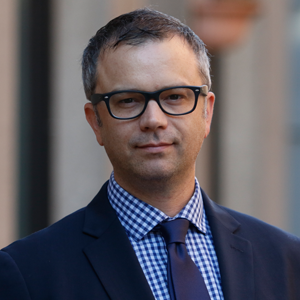
James Wright
Editorial Manager
Global Aquaculture Alliance
Portsmouth, NH, USA[103,114,111,46,101,99,110,97,105,108,108,97,97,103,64,116,104,103,105,114,119,46,115,101,109,97,106]
Tagged With
Related Posts
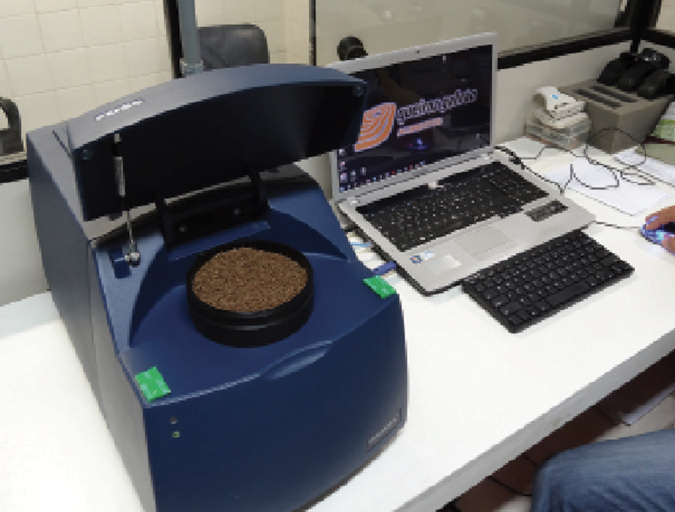
Aquafeeds
NIRS technology ensures shrimp feed quality at farm level
Feed plants deal with varied raw materials, formulations and feeds for different animals, which can lead to quality issues and nutrient variations. Near-infrared spectroscopy (NIRS) has been successfully applied in Brazil to ensure feed quality standards at the farm level.
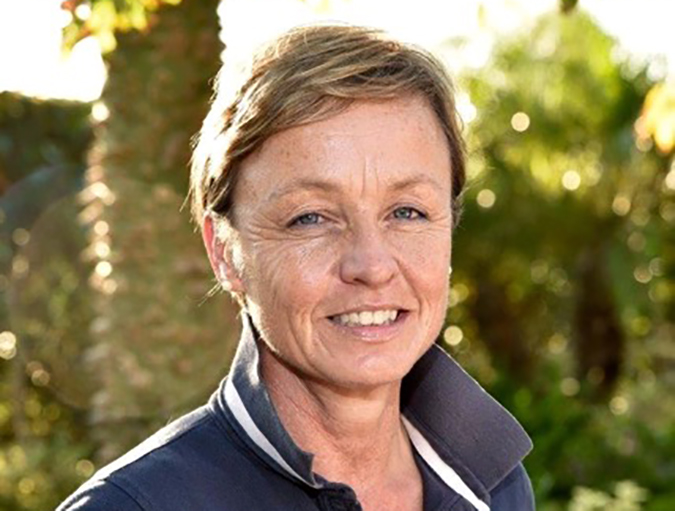
Innovation & Investment
Aquaculture Exchange: Melanie Siggs, part 2
In the conclusion of a two-part interview, independent advisor Melanie Siggs talks to the Advocate about consumer perceptions of aquaculture, and many roles that NGOs fill and her hopes for the Global Sustainable Seafood Initiative and its work with certification schemes.
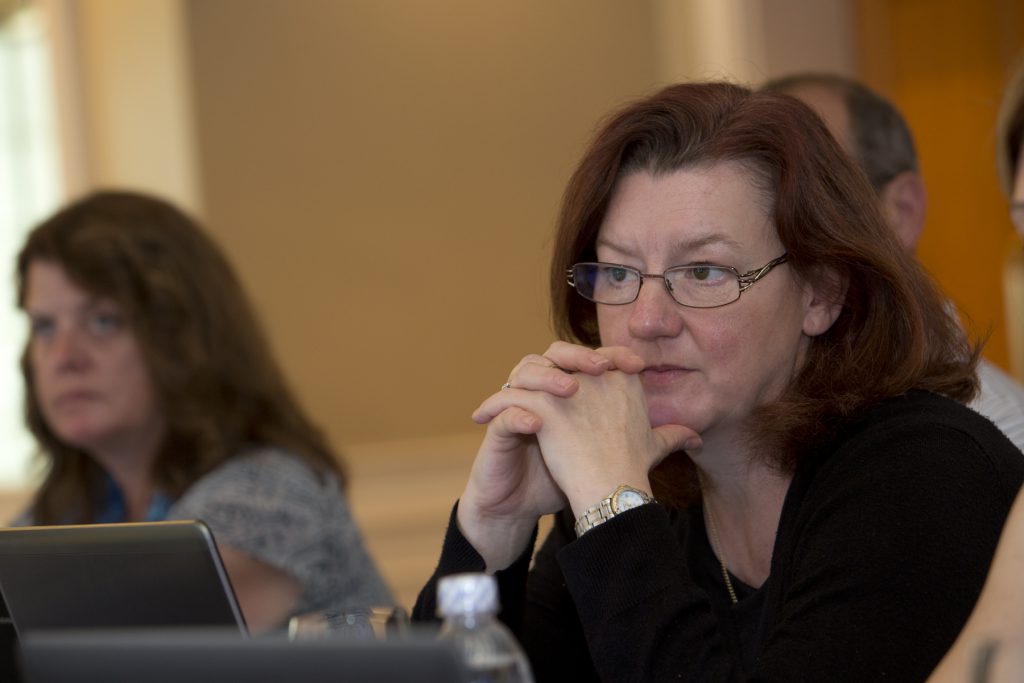
Innovation & Investment
Aquaculture Exchange: Dawn Purchase, part 1
In a wide-ranging interview, the Marine Conservation Society’s aquaculture program manager applauds innovation, decries food waste and gives a look inside the Global Aquaculture Alliance’s Standards Oversight Committee. She touches upon land-based fish farming, aquafeed production and retailers’ huge responsibilities.
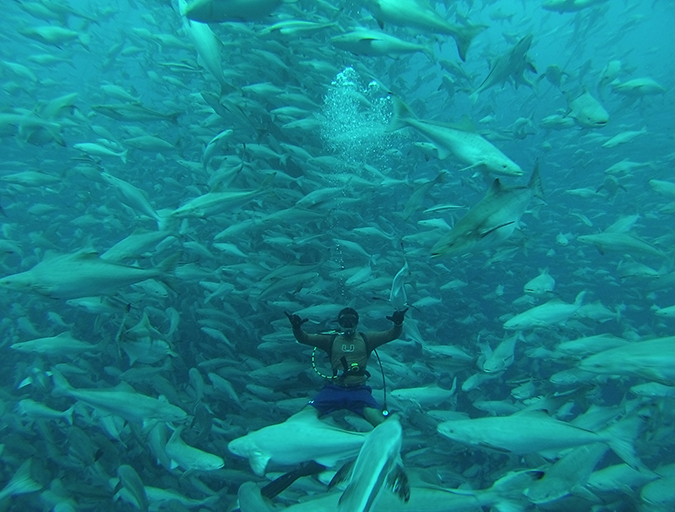
Innovation & Investment
Aquaculture Exchange: Daniel Benetti
University of Miami professor says the U.S. seafood marketplace needs to embrace 'plate-sized' fish if a domestic aquaculture industry is to become sustainable and profitable.


